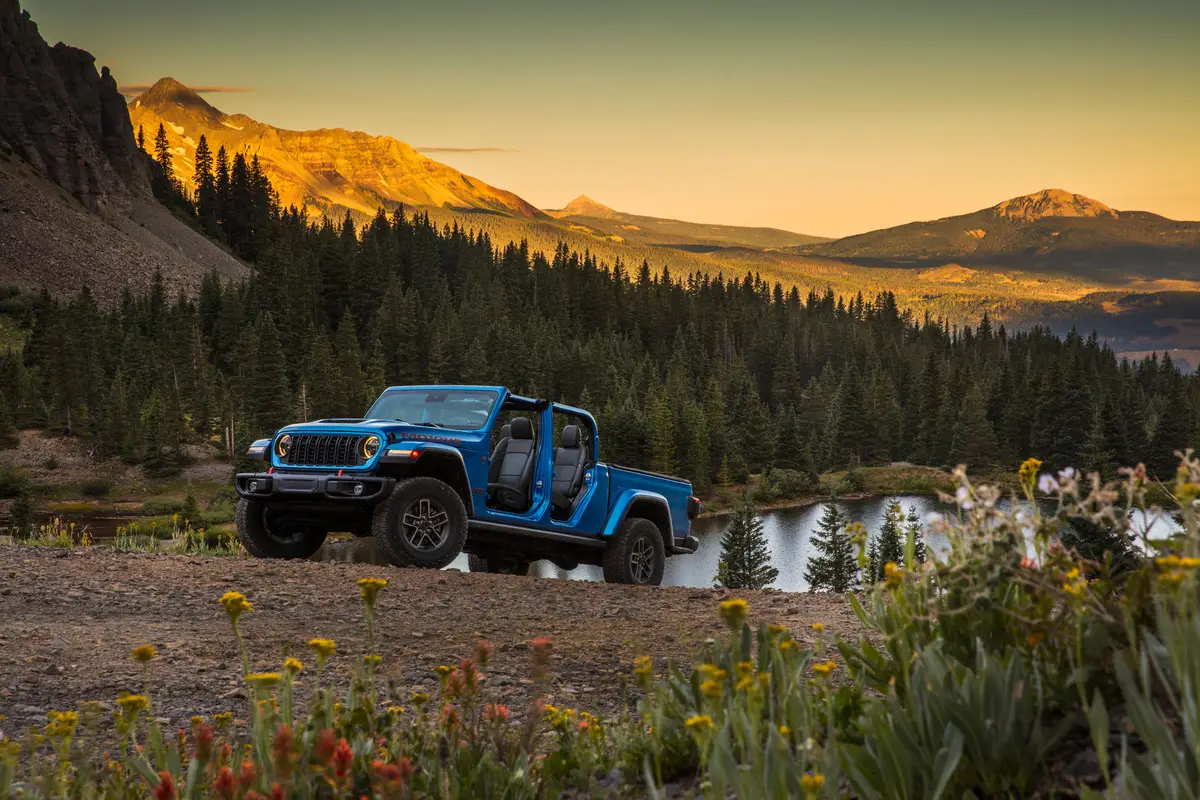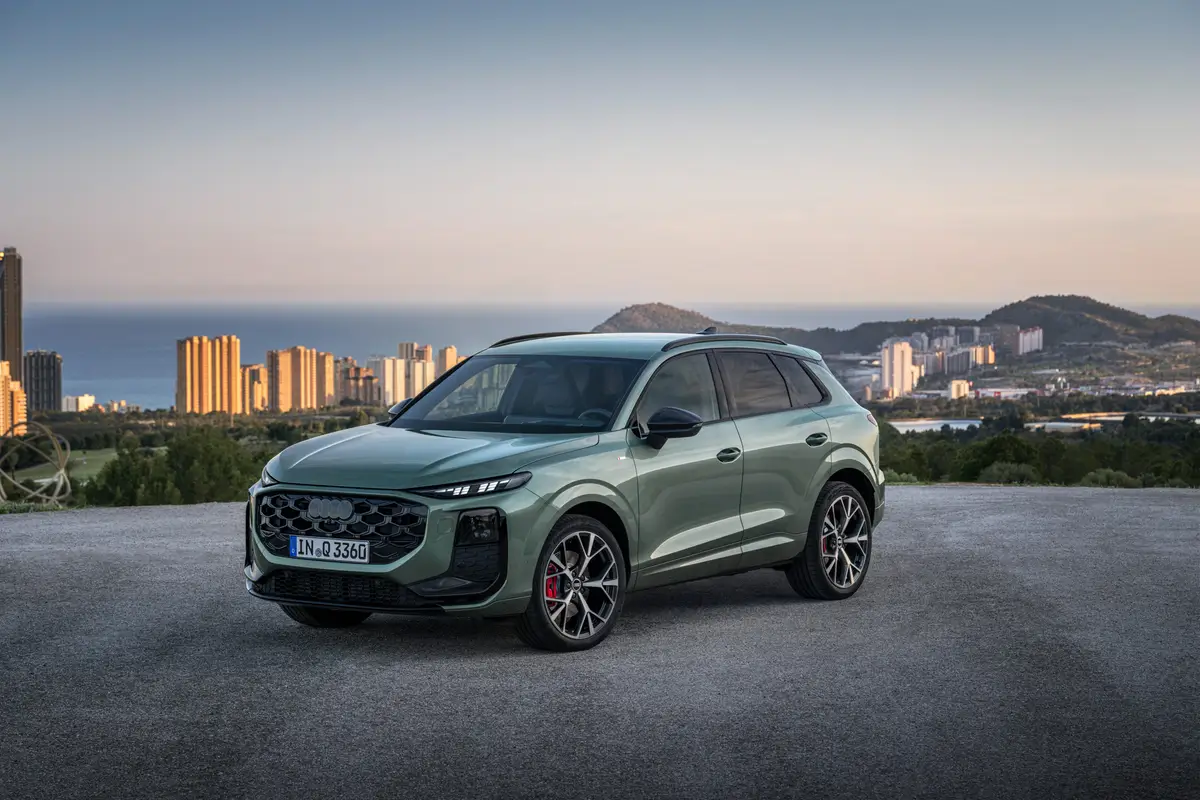PickupTrucks.com's view
Photos by Drew Phillips
Has Ford created the ultimate off-road chase truck?
The 2010 Ford F-150 SVT Raptor quickly rose to the top of factory performance trucks with its unique long-travel suspension system and an appearance reminiscent of a Baja trophy truck. It met the untapped demand of off-road enthusiasts looking for a turn-key prerunner. But there was even more demand for a Raptor with extra cabin space from wheelers with families and racers looking for a support vehicle.
So we set out to see if the SuperCrew version performs as well as the lighter and shorter-wheelbase SuperCab SVT Raptor or a heavy-duty three-quarter-ton chase truck, like a hardened Ford F-250 recovery rig.
The 145-inch wheelbase Raptor SuperCrew model is 12 inches longer than the SuperCab model. That extra room for bodies and gear doesn’t come for free. The extra doors that make the Raptor SuperCrew desirable for families or racers with a pit crew add weight and increase the truck’s breakover angle. That must mean the truck has lost some of its performance … or does it?

The Raptor SuperCrew can fly down washboard roads without feeling loose or unstable. We averaged 50-60 mph on a few dirt roads, and the six-speed transmission kept the truck at the proper power range for effortless acceleration.
After driving the Raptor SuperCrew earlier this year in the frozen northlands of Michigan’s Upper Peninsula, Ford’s big desert eagle is also right at home in Southern California’s deserts. The Raptor SuperCrew flies over washboard pitted dirt roads and smooths out harsh bumps with its aluminum lower control arms, forged steel uppers and Fox Racing shocks. The longer wheelbase makes it easier to drift around corners with precise control, thanks to the 16:1 steering ratio (tightened from 20:1) that was added to the SuperCrew model to make up for the truck’s length.
Switching to the Raptor’s unique off-road mode allows the truck to perform more like a racer, applying slightly more power to the rear to accelerate out of turns and help you control the truck’s steering with the throttle when needed.
Despite the ability to change the truck’s suspension modes, we did find that the Raptor SuperCrew tended to oversteer in a variety of conditions. Fortunately, the Raptor’s Advance-Trac stability controls make it easy for novice off-road drivers to keep the truck in full control, both on and off the highway, providing they prerun the course first to see what they’re getting into.
Equipped with a 6.2-liter V-8 that produces 411 horsepower and 434 pounds-feet of torque, the Raptor SuperCrew isn’t sluggish but it lacks the crisp and immediate throttle response needed at high speeds in the rough. While this might be an issue if you’re racing, it definitely doesn’t deter from its overall performance.

The 6.2-Liter V8 is a cast-iron block with aluminum cylinder heads. Producing 411 horsepower and 434 pounds-feet of torque, a modified version of the engine has proven itself during a Baja 1000 race and can keep cool under extreme conditions.
Nonetheless, the 6.2 has been tested by Ford in extreme heat, dirt and sandy conditions. The 16-valve single-overhead-cam engine’s cast-iron block with aluminum cylinder heads features variable camshaft timing. This helps boost and optimize the engine’s fuel economy and performance, which was evident during our testing. We averaged slightly over 14 mpg in highway mileage, the same as the EPA’s highway rating (12/14 mpg city/highway) and the six-speed automatic transmission kept the engine in its prime rpm range to maximize performance.
As expected, the SuperCrew’s ride was very smooth no matter what type of obstacles we encountered. The front and rear triple internal bypass Fox Racing dampers are tuned differently from the SuperCab model, and the coil springs are 8 percent stiffer to compensate for the heavier engine and longer wheelbase. Yet, the truck didn’t feel different from the SuperCrew model in off-road conditions.
During normal city and highway driving, however, the heavier truck does seem like you’re in a three-quarter-ton, until you stomp on the throttle or take a corner at high speed. We did notice some highway oscillations typical of any extended-wheel base pickup, but they weren’t as harsh as on other four-door pickups we’ve tested.

The transmission +/- toggle switches allow the driver to set various upshift and downshift points, depending on vehicle speed. These are great to improve exit speeds out of a turn or when approaching hills, but require some time to learn to use properly.
In four-wheel-drive high mode, the Raptor SuperCrew pushed through deep sand, slowly climbed up steep hills and easily crawled over obstacles with the help of the electronic locking rear differential. The Raptor SuperCrew’s longer wheelbase and hill descent control also made it much easier to climb down a steep hill pitted with deep ruts that, in one instance, left the driver’s rear tire completely in the air.
The truck’s 315/70R17 BFGoodrich All Terrain tires are quiet on the highway and have enough sidewall to cushion bumps while also providing lots of great traction in off-road conditions. The tires also add to the truck’s overall towing capability, which is rated at 8,000 pounds (about half what a diesel-powered F-250 can pull), making it suitable for hauling a trailer full of ATVs or an enclosed trailer with a light race truck inside. The SuperCrew Raptor also has a huge 36-gallon fuel tank, which hurts a little when you fill it up, but also ensures you have enough fuel to reach a broken-down Trophy Truck in the middle of the desert.
Inside, the Raptor SuperCrew is comfortable and sporty. The front leather seats are firm yet not too hard for a long road trip. The large 4.2-inch LCD screen in the center of the instrument cluster allows you to view a variety of vehicle functions. It includes an off-road screen that allows you to see steering wheel and vehicle angles when on a grade or obstacle plus a special screen to keep track of all of the Raptor’s special drive modes and controls.
The toggle switches on the center console control the transmission shift functions. This allows you to select various modes that control gear selection of upshifts and downshifts according to engine speed. While this is perfect for maximizing your speed over difficult terrain, it takes a while to learn its functions. After a few unsuccessful attempts at optimizing our downshift points from a short turn we kept taking at high speed, we left the toggle switches alone and opted to concentrate on the truck’s other interior features.

The Raptor SuperCrew is comfortable and sporty at the same time. The instruments offer the driver full control and various gauges to monitor engine and off-road functions.
One of these includes a much-needed telescoping steering wheel that allows you to sit properly and comfortably for any type of high-speed driving. The Raptor SuperCrew also includes a rearview camera and trailer brake controller, which adds to the truck’s full capabilities. We also liked the other standard features such as the perimeter alarm, which lets you know when a vehicle is in your blind spot, and a head restraint for the middle backseat passenger to further limit neck injuries for family or crew members.
The bottom line is that the Ford F-150 SVT Raptor SuperCrew offers more advantages and capabilities for a tow and chase truck or family adventure vehicle than what the SuperCab Raptor or what diesel-powered heavy-duty off-road owners may already have. Sales seem to prove it. The Raptor SuperCrew is one of the fastest-selling trucks in Ford’s lineup for 2011. It’s difficult to find at dealerships, and it’s priced about the same as a three-quarter-ton diesel. Our test model priced out at $51,645.
With its high-performance suspension and a powerful 6.2-liter V-8, the Raptor can travel almost anywhere off-road much more quickly and with much less effort than most off-road-customized three-quarter-ton chase trucks and with more comfort for rear passengers compared with the SuperCab Raptor. Just remember, while the Raptor is tough, it’s not immortal.

Articulation is the key to gaining full traction. The Raptor SuperCrew’s longer wheelbase makes it easy to go over deep and large obstacles.

At speed in deep sand, the Raptor SuperCrew floats well over the terrain, and the 6.2-liter has plenty of power to keep the heavier truck in motion.
Latest news



